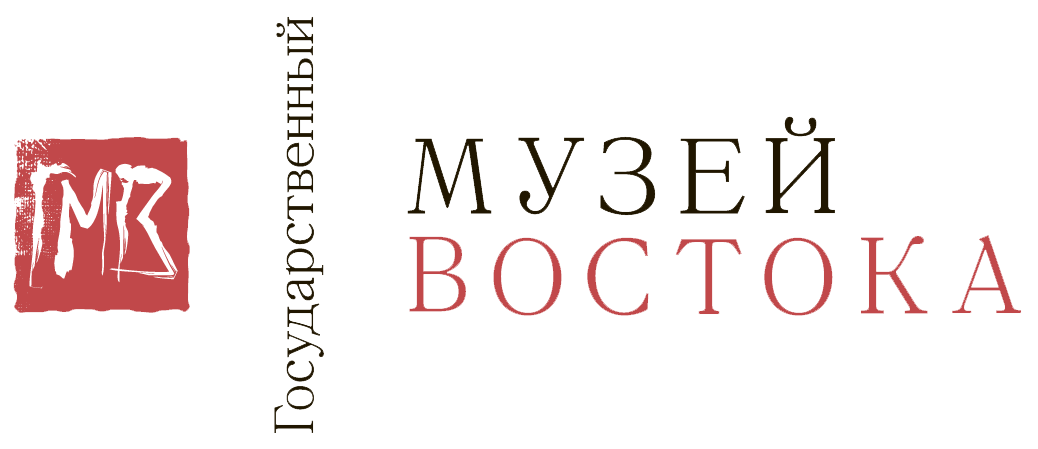Old Japanese photography and woodblock prints

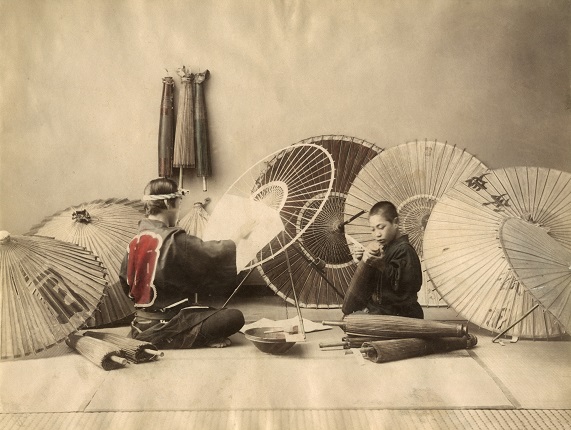
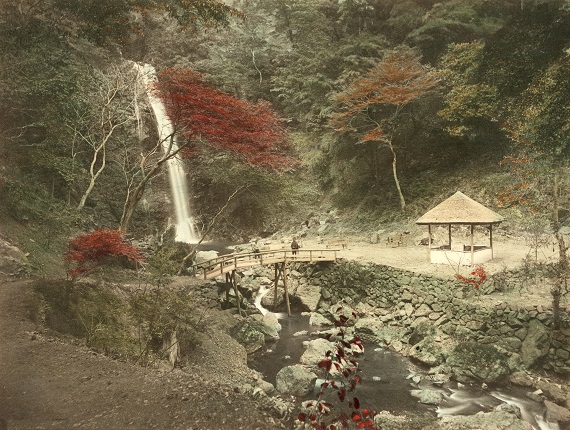
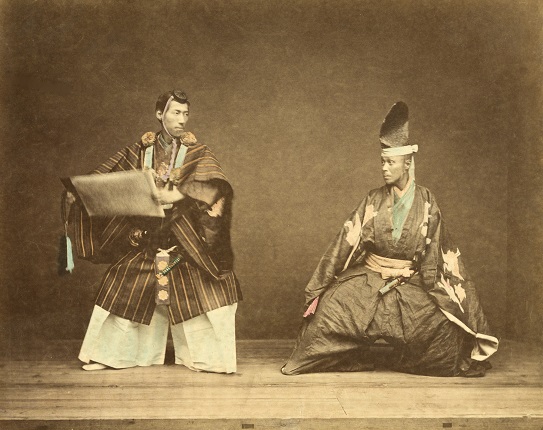

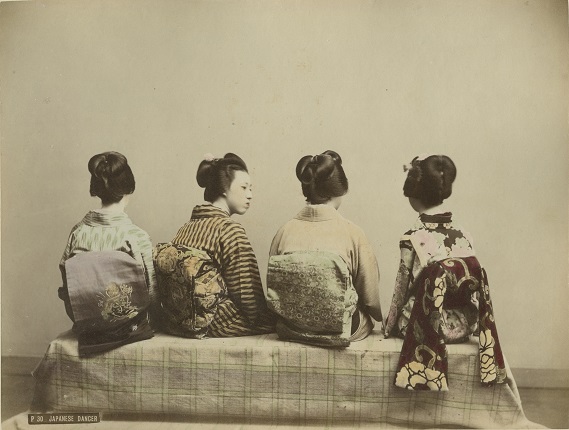
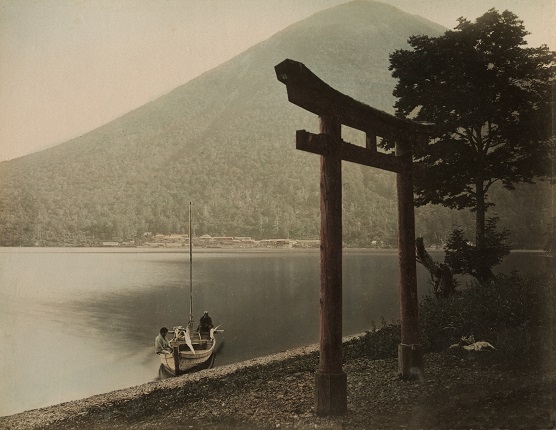
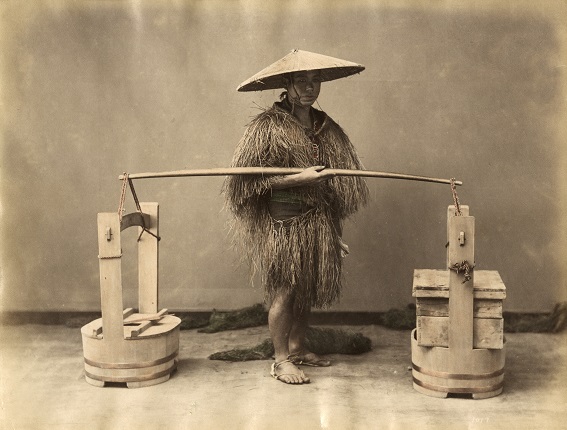
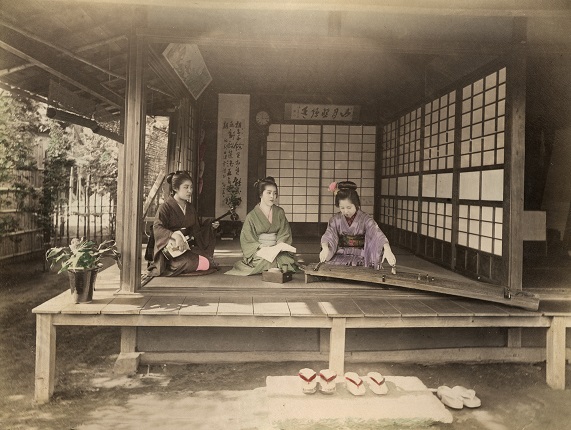
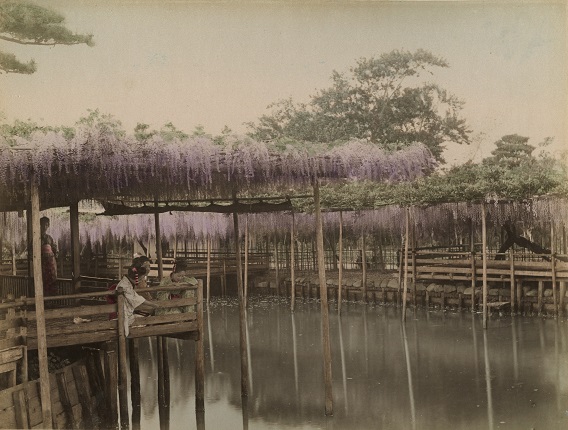
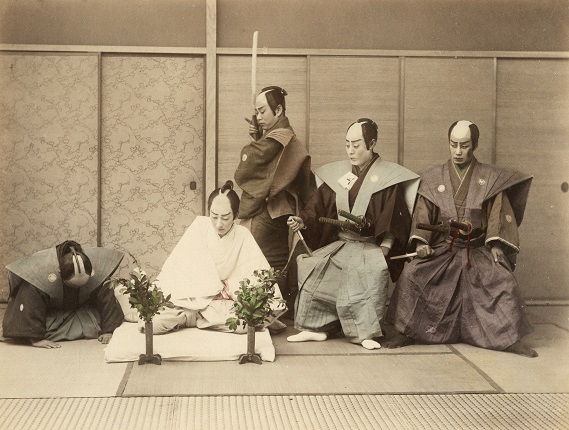
Unknown author. Mt. Fuji viewed from the Lake Ashi, Hakone. 1880—1890s. Albumen print, hand-colored. MAMM collection
Kusakabe Kimbei. Umbrella workshop. 1883—1897. Albumen print, hand-colored. MAMM collection
Unknown author. Waterfall of Mino near Kobe. 1880—1890s. Albumen print, hand-colored. MAMM collection
Usui Shuzaburo. Аctors. 1880s. Albumen print, hand-colored. MAMM collection
Kusakabe Kimbei (?). Blindfolders game at Nogeyama Park, Yokohama. 1880—1890s. Albumen print, hand-colored. MAMM collection
Unknown author. Hairstyles and knots. 1880—1890s. Albumen print, hand-colored. MAMM collection
Tamamura Kozaburo. The torii of Chugu Shrine by Lake Chuzenji, and Mt. Nantai, Nikkō. 1880—1887. Albumen print, hand-colored. MAMM collection
Unknown author. The tofu seller wearing a mino straw cape. 1880—1890s. Albumen print, hand-colored. MAMM collection
Unknown author. Girls playing music. 1880—1890s. Albumen print, hand-colored. MAMM collection
Tamamura Kozaburo (?). Watching wisteria blossoms from a tea house at Kameido-Tenjin Shrine, Tokyo. c. 1897. Albumen print, hand-colored. MAMM collection
Adolfo Farsari (?). Theatrical scene of seppuku, ritual samurai suicide by disembowelment. 1880—1890s. Albumen print, hand-colored. MAMM collection
Moscow, 18.05.2018—29.07.2018
exhibition is over
Share with friends
Curator: Igor Volkov, Anna Pushakova
For the press
XII INTERNATIONAL MONTH OF PHOTOGRAPHY IN MOSCOW ‘PHOTOBIENNALE 2018’
Old Japanese photography and woodblock prints
Curators: Igor Volkov, Anna Pushakova
As part of the Photobiennale 2018 the Multimedia Art Museum, Moscow and State Museum of Oriental Art present the exhibition ‘Old Japanese photography and woodblock prints’.
Since it was founded more than 20 years ago MAMM has assembled a significant collection of Japanese tinted photographs from the Meiji period (1868–1912). This collection was begun in 1998, and the latest addition was made thanks to the museum’s Japanese partner. Today the collection may be rightly called one of the largest in Europe. Coloured photography is a special phenomenon that stands at the intersection of several traditions: European photography and Japanese traditional art forms. A comprehensive and varied picture is provided by this large complex of photographs (more than one hundred) and, in dialogue with them, a selection of some 50 engravings by recognised masters (Kitagawa Utamaro, Katsushika Hokusai, Utagawa Hiroshige, etc.), as well as elements from the world of objects — the screen and kimono — from the collection of the State Museum of Oriental Art.
After a long period of self-isolation the Meiji era became a turning point in Japanese history and determined the subsequent rapid development of the country. Close contacts and the exchange of achievements in culture and science intensified in the mid-19th century, at a time of positivism and industrial revolution, rich in important political events and scientific discoveries. With the arrival of this new epoch photography was approved and promoted at the highest level: the early 1870s brought the first photographs of reformist Emperor Mutsuhito and his wife, marking the ‘repeal’ of the long-standing ban on images of the emperor. European clothes began to be worn. Russian travellers compared the processes taking place on the islands at this time with Peter the Great’s reforms in Russia.
Photography, the fruit of the technical revolution and the ideology of rationalism, came to Japan from the West back in the 1840s, but early experiments with the daguerreotype in the 1850s undertaken by visitors and local enthusiasts were episodic and inconsistent.
The heyday of the art of photography in Japan occurred in the last quarter of the 19th century. It was determined by Western photographers such as the Englishman of Italian descent Felice Beato (1832–1909), Austrian Baron Raimund von Stillfried-Rathenicz (1839–1911) and Italian Adolfo Farsari (1841–1898).
Photographers inherited the photographic studio together with the accumulated material, so it is often very difficult to separate the work of one author from another, and Japanese students and followers such as Kusakabe Kimbei (1841–1934), Tamamura Kozaburo (1856–1923?) and Ogawa Kazumasa (1860–1929) actively continued the undertakings of European teachers. Although the images were taken by both European and local photographers, they form a single phenomenon that belongs to both Japanese and Western culture, in the same way as foreign masters that worked in Russia from the time of Peter the Great can be considered part of the history of both Russian and European art.
In works of the 1880s to 1890s we see first of all adherence to the photographic schema of composition and genres of the 19th century: views, types, staged scenes and portraits. Such photography can be compared to the interest in exotica in the rococo culture of the first half of the 18th century — a fascination with the unusual, but refracted through the visual prism of a representative of European civilisation. According to researchers’ estimates for the second half of the 19th century, more than 200,000 images of Japan were created, forming a kind of encyclopaedia of images. This fact shows that the demand for coloured photography was so great that it produced a wholly developed industry and serious commercial activities. The photographs were often combined in albums and served as souvenirs that evoked memories of a perfect trip, or satisfied interest in a distant and mysterious land.
At the same time both European masters and the Japanese photographers that followed them could not ignore local tradition, and Japanese visual culture appeared in the shots either explicitly or implicitly. Subject matter, motifs, realia, traditional symbols — all this obviously resembles other types of art, in particular ukiyo-e, a type of coloured woodblock engraving (xylograph) that also flourished in the 19th century. The name of the genre translates from Japanese as ‘pictures of the transitory world’. The art of the engraving in the late Edo period and Meiji period is strikingly in tune with photography — both art forms are produced in multiple editions, while in one way or another they both feature colour and are intended for the general public (at this time Japanese engraving was becoming a collectible outside Japan, too). The authors sought inspiration for their subject matter in the diversity of urban life, trying to capture elusive reality and turning it into an ephemeral image produced on fragile paper. The photographs presented at the exhibition are made in the technique of albumen printing, which inexorably fades from contact with sunlight. Instead of being coloured in their entirety, the usual procedure in the West, many of the pictures were partially tinted, not for the sake of any particular naturalism, but to place visual emphasis. Colouring fades more slowly than the photographic printing itself, so the tinted parts of prints may appear too bright to us today.
The exhibition ‘Old Japanese Photography and Engraving’ combines staged images taken in the streets and using extras with mise-en-scenes entirely constructed in the airless space of a photo studio, where daily life turns into an exotic ritual and the collective and typical images of geishas and samurais are depicted by actors in disguise. But despite the artificiality, in many compositions a breath of life slips past, independent of the artist: grease-painted phantom figures on the streets, direct manifestations of emotion in secondary characters and what professional European photography would view as ‘ugly’ moments, for instance the process of eating food, where subjects are captured with a gaping mouth. Deep symbolism (including depictions of plants such as lotus, iris, wisteria, bamboo, pine, sakura and maple) is hidden in many of the scenes, as well as the special plasticity of realia: gardens, architecture, interiors, suits, accessories and everyday objects.


